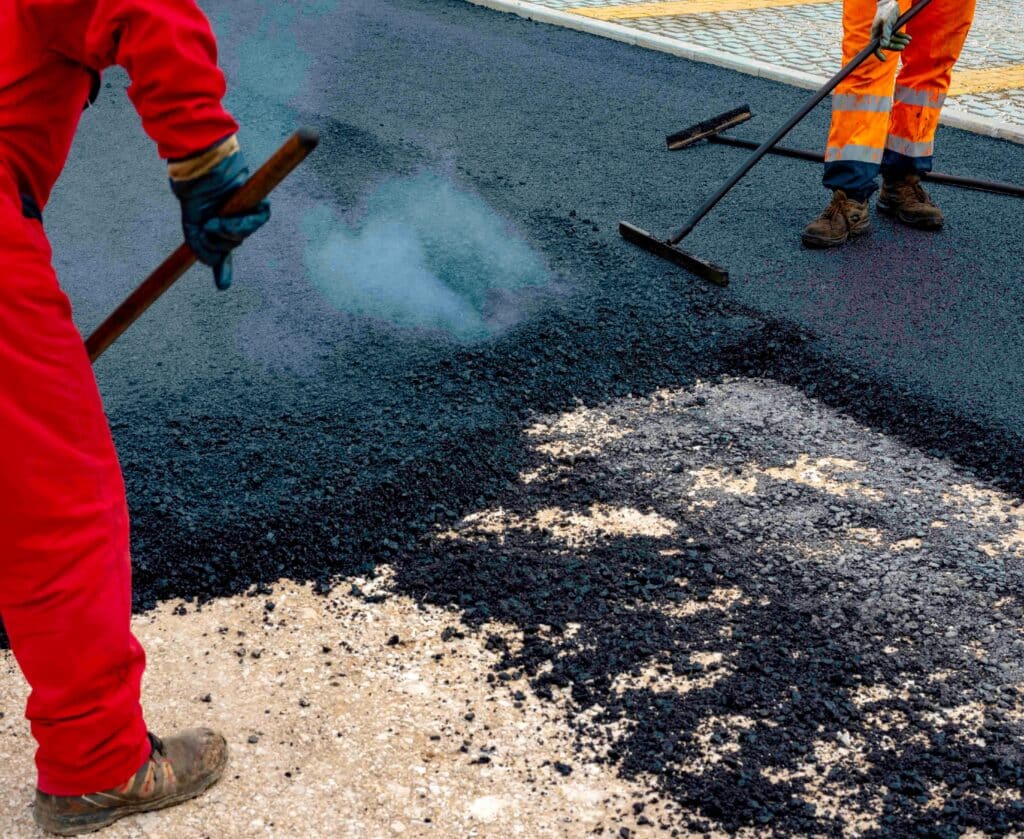Boost Residential Or Commercial Property Value and Functionality with Hot Mix Asphalt Paving Solutions
Boost Residential Or Commercial Property Value and Functionality with Hot Mix Asphalt Paving Solutions
Blog Article
Unlocking the Tricks of Hot Mix Asphalt Technology
Checking out the midsts of hot mix asphalt modern technology discovers a globe where meticulous procedures and precise formulations assemble to form our roads and framework. The blend of accumulations, fillers, and binders isn't just a construction job yet a critical orchestration of toughness and performance.
Importance of Hot Mix Asphalt
Hot Mix Asphalt plays a vital function in modern facilities development because of its toughness and cost-effectiveness. As one of the most commonly made use of leading product for roads, highways, and parking area, Warm Mix Asphalt offers a series of benefits that add to its value in building and construction tasks. One vital benefit is its capacity to hold up against hefty website traffic loads and rough weather, giving a reliable and long-lasting surface for transportation networks. In Addition, Hot Mix Asphalt is affordable in both initial building and long-term maintenance, making it a recommended choice for lots of infrastructure jobs.
The resilience of Warm Mix Asphalt stems from its make-up, which includes accumulations, binder, and filler products that are thoroughly chosen and blended to meet details performance demands. Generally, the importance of Hot Mix Asphalt in infrastructure development can not be underrated, as it continues to be a foundation of modern construction practices.
Components of Asphalt Mixes
The structure of asphalt mixes includes carefully selected aggregates, binder, and filler products that are critical for attaining particular efficiency requirements. Accumulations are the primary element of asphalt blends, giving strength and security. These accumulations can be all-natural, such as gravel or crushed rock, or synthetic, like recycled materials from old sidewalks. The binder, typically asphalt or asphalt cement, holds the aggregates with each other and provides versatility and resilience to the mix. The option of the binder is crucial as it directly affects the mix's efficiency in various weather. Fillers, such as moisturized lime or Rose city cement, are made use of to improve the mix's workability and aging resistance. Angled Parking.
The mix and percentage of these parts play a significant role in determining the quality and performance of the asphalt mix. Engineers carefully design the mix to meet particular requirements, considering elements like traffic quantity, environment problems, and pavement life expectancy. Appropriate selection and balancing of accumulations, binder, and fillers are vital for producing resilient, lasting asphalt pavements.
Combining and Manufacturing Methods

As soon as the accumulations are picked, the binder, usually top article asphalt concrete, is included in important source bind the products with each other. The binder's top quality and quantity considerably impact the mix's strength, resistance, and flexibility to ecological aspects. Furthermore, fillers like hydrated lime or Portland concrete might be integrated to enhance specific features of the asphalt mix, such as its workability or dampness resistance.
During production, the accumulations and binder are warmed, normally between 250-325 ° F(121-163 ° C ), to help with blending and make certain appropriate covering of the aggregates. The blending process needs to be extensive to achieve an uniform mix that promotes the wanted performance characteristics of the asphalt. Different methods, such as batch blending or drum mixing, are used to accomplish regular and top notch asphalt blends for construction tasks.
Aspects Affecting Asphalt Efficiency
Elements affecting asphalt efficiency incorporate a range of variables that affect the longevity, longevity, and overall high quality of asphalt sidewalks. One key element is the top quality of products used in the asphalt mix.

Environmental problems likewise influence asphalt efficiency. Temperature level variants, moisture infiltration, and traffic lots can all impact the architectural honesty of the pavement. Style considerations, such as pavement density and drainage, are necessary in ensuring the long-lasting efficiency of the asphalt pavement. By thoroughly taking into consideration these elements, designers and service providers can optimize asphalt performance and improve the life span of sidewalks.
Lasting Practices in Asphalt Innovation

WMA permits for the production and positioning of asphalt blends at lower temperature levels compared to standard hot-mix asphalt, resulting in reduced energy intake and greenhouse gas emissions. The usage of permeable asphalt mixes can assist minimize stormwater runoff problems by permitting water to infiltrate with the sidewalk and into the ground, promoting all-natural water purification and recharge processes.
Final Thought
To conclude, hot mix asphalt innovation plays a critical role in modern facilities advancement because of its longevity and cost-effectiveness. By thoroughly balancing components, employing proper mixing strategies, and considering various factors, designers can develop high-quality asphalt blends that withstand rush hour tons and severe climate condition. Embracing lasting methods, such as using recycled products and warm-mix technologies, even more boosts the environmental kindness of asphalt technology.
Mixing and manufacturing techniques in hot mix asphalt modern technology involve the specific combination and processing of accumulations, binder, and fillers to create a long lasting and high-performance asphalt mix.Variables affecting asphalt performance encompass an array of variables that affect the resilience, long life, and general quality of asphalt sidewalks. Sustainable practices in asphalt innovation include numerous efforts aimed at minimizing the environmental influence of asphalt production and paving processes. By incorporating recovered asphalt pavement (RAP) and recycled asphalt roof shingles (RAS) into brand-new asphalt mixes, the market can considerably lower the usage of raw products and power, while additionally reducing landfill waste.
WMA enables for the manufacturing and placement of asphalt blends at reduced temperatures contrasted to conventional hot-mix asphalt, resulting in lowered energy consumption and greenhouse gas discharges.
Report this page